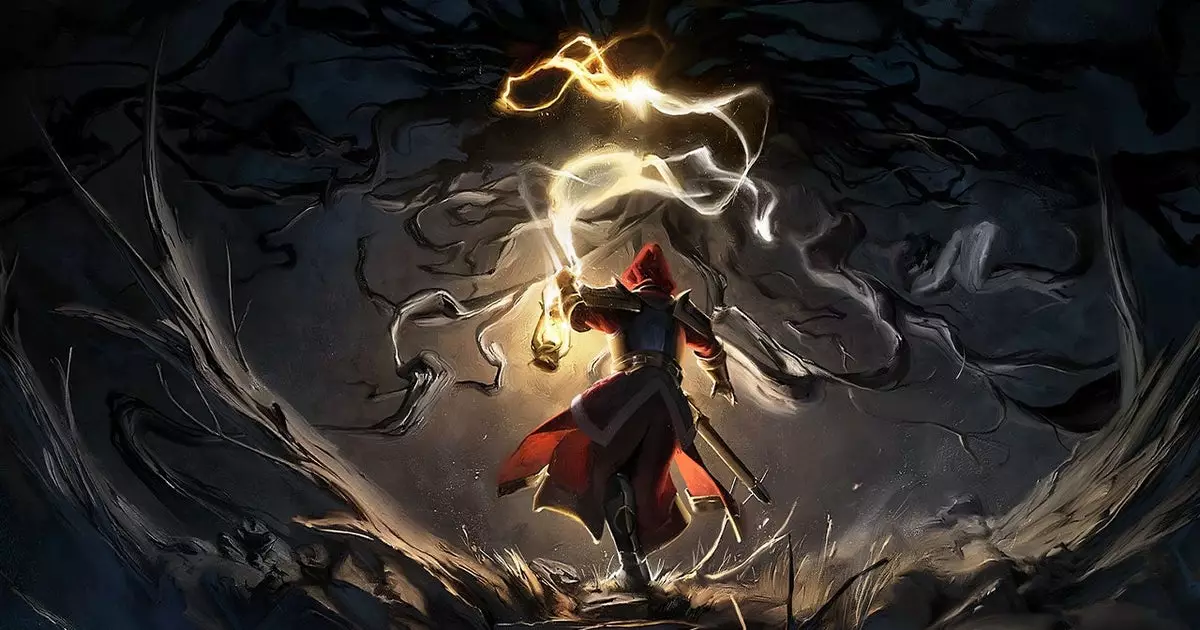As I delve deeper into the world of Mandragora: Whispers of the Witch Tree, it becomes increasingly evident that this title is far from a standard dark fantasy side-scroller. Upon its initial announcement, I too harbored doubts about its uniqueness, suspecting it might fall victim to the banal conventions common to the genre. Vast similarities to renowned games like Castlevania or Trine were impossible to ignore; there was an overwhelming sense that Mandragora would merely blend into the ocean of mediocrity within its genre. But as I now immerse myself in the fleshed-out experience, those earlier apprehensions seem misplaced. Instead, I find myself captivated by the rich narrative at the core of Mandragora, which elevates it from the shadows of predictability and into something genuinely engrossing.
At its heart, Mandragora features a story steeped in dark fantasy that pulses with life and intrigue. Set within the hauntingly beautiful remnants of the Crimson City—a location that feels as if it has emerged from the pages of a haunting fairy tale—the game introduces players to an oppressive regime ruled by the King Priest. This character draws unsettling parallels to notable figures from literature and film, such as Judge Claude Frollo from Disney’s rendition of The Hunchback of Notre-Dame, hinting at brighter allusions cloaked in darkness. He stands as both protector and tormentor, calling forth a battle against witches who symbolize defiance against his authoritarian rule.
Application of Grit and Strategy in Gameplay
Mandragora’s gameplay mechanics, while reminiscent of classic action RPGs, offer a refreshing take when blended with its narrative threads. The core gameplay displays a striking range of intricacies—players wield a primary weapon alongside a secondary option that may include powerful spells or defensive shields. This fusion allows for varied combat styles that underline the player’s strategy. Combat transcends mere button-mashing, ushering in an era of stamina-focused skirmishes where dodging and evasion play integral roles.
As we navigate through the lush, deadly environments, akin to a balance between the slick combat of classic Castlevania and the expansive satisfaction found in titles such as Path of Exile 2, the game continually reveals layers of complexity. Crafting is woven into its DNA, allowing players to forge weapons and spells while uncovering resources scattered throughout the Crimson City. However, what truly entices me is the game’s focus on exploration, pushing players to discover hidden realms and secret passages akin to the challenging pathways of the Dark Souls series.
Storytelling as the Unifying Element
Beyond combat and crafting lies Mandragora’s crowning achievement: its narrative substance. The atmospheric dialogue and character interactions resonate with depth, creating characters who reflect vulnerability amidst their struggles. For instance, one moment stands out—engaging with a merchant after smashing his crates, only for him to clamor for forgiveness upon discovering the protagonist’s Inquisitor status. It’s these nuanced scenarios that infuse life into the world, weaving humor and tension seamlessly together, as they reveal the personality of the realm surrounding the player.
Mandragora also excels in delivering compelling side narratives. The protagonist, thrust into the role of a reluctant hero, grapples with the burdens of newfound powers and expectations. A voice whispers in the character’s mind, hinting at an internal struggle that creates an additional layer of intrigue. By forging a strong connection between players and the central character, the game enhances the emotional stakes involved in every decision.
Visuals That Speak Volumes
Aesthetically, Mandragora’s artistic direction demands attention. The character portraits strike an uncanny balance, resembling oil paintings that seem to quiver with life, evoking a sense of the supernatural. While some players might be deterred by their haunting quality, I find these visuals offer an engaging artistic experience that reflects the emotional gravitas of the narrative. The hyper-stylized elements add a unique flavor to the game, creating an atmosphere that enhances the storytelling, proving yet again that visuals can be as powerful as dialogue in creating immersion.
In this burgeoning genre filled with familiar tropes, Mandragora: Whispers of the Witch Tree emerges as a refreshing creation. With character-driven storytelling, engaging gameplay, and remarkable artistic design, it ultimately presents itself as an enthralling experience that avid gamers should explore. As the world builds around its protagonist, it becomes clear that Mandragora might just be the dark fantasy adventure that captivates the hearts of those willing to enter its shadowy embrace.

